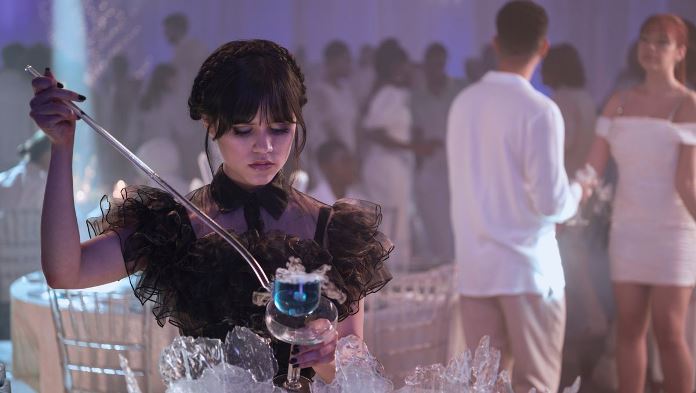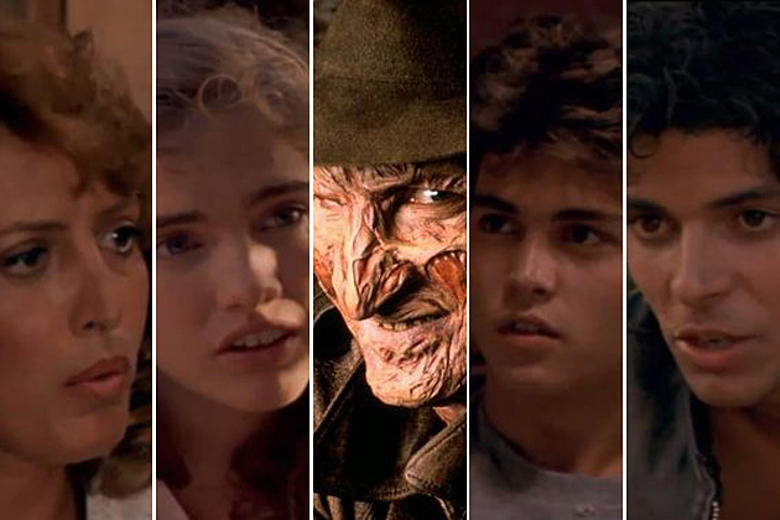You think you know horror? Think again. Halloween gave us masked killers. Friday the 13th armed Jason with his machete. But none of them dared to invade the most vulnerable part of our lives—our sleep. That’s where the A Nightmare on Elm Street film rewrote the rules. Wes Craven’s 1984 masterpiece didn’t just add another villain to the slasher lineup; it weaponized our dreams, turning comfort into pure terror.
What makes it even more disturbing is that Freddy Krueger’s nightmare legacy wasn’t crafted out of thin air—it was fueled by the true events that inspired A Nightmare on Elm Street. Real cases of people who died in their sleep after terrifying dreams gave birth to one of the most enduring monsters in horror history.
The A Nightmare on Elm Street film endures not just because of Freddy’s razor glove or sadistic humor, but because it blends supernatural horror with a psychological edge that feels dangerously real. This isn’t just entertainment. It’s a cultural warning that still keeps audiences awake, decades later.
Why Wes Craven’s Personal Demons Forged a Legend
Why did A Nightmare on Elm Street feel so disturbingly real? Because its roots were tangled in reality itself. Wes Craven, once a humanities professor, was more than a filmmaker—he was a scholar of fear. He didn’t just want to scare you for a moment; he wanted to shake your sense of safety long after the credits rolled.
Freddy Krueger wasn’t born from thin air. The character was stitched together from unsettling fragments of true stories. Craven came across reports in the Los Angeles Times describing a wave of mysterious deaths among Southeast Asian refugees. Young, healthy men were dying in their sleep, often after nights filled with terrifying nightmares. Witnesses said many cried out or struggled violently before passing.
Doctors were left grasping for explanations, labeling the condition “Asian Death Syndrome” or “Nightmare Death,” now known as Sudden Unexpected Nocturnal Death Syndrome (SUNDS). This chilling phenomenon became Craven’s spark. He asked one haunting question: What if the nightmare itself could kill you? That single idea became the foundation of one of the most iconic horror legends of all time.
What Makes FreddyRead More
 Krueger the Ultimate Horror Villain? A Breakdown of the Dream Killer
Krueger the Ultimate Horror Villain? A Breakdown of the Dream Killer


What separates Freddy from the mute, hulking shapes of Michael Myers or Jason Voorhees? It’s his personality. He’s a sadist who revels in his work. Robert Englund didn’t just play a monster; he embodied a charismatic, darkly humorous predator. The claw glove—a now-iconic slasher genre staple—wasn’t just for show. Craven’s genius was in making the weapon a part of the man, a brutal extension of his identity as a child murderer.
Freddy exists in the surreal landscape of dreams, a realm where the rules of physics and reality are meaningless. This allowed for horror special effects that were groundbreaking for 1984. The famous blood geyser from Johnny Depp’s bed wasn’t just a shock moment; it was a statement of scale, a visceral explosion of gore that dwarfed anything in contemporary horror. The wall morphing scene, where a body is dragged across a ceiling, warped our perception of the safe, suburban bedroom into a fluid, deadly funhouse. This surreal horror aesthetic is what gives the A Nightmare on Elm Street film its enduring, nightmarish power.
How to Survive a Nightmare: The Unforgettable Final Girl Performance of Nancy Thompson
In a genre saturated with screaming victims, Heather Langenkamp’s Nancy Thompson redefined the Final Girl trope. She wasn’t a resourceful survivalist like Ripley or a frantic mess; she was a brilliant, determined teenager who used her intellect and willpower to fight back. How did Nancy Thompson become such an iconic Final Girl analysis? She weaponized her fear.
While her friends succumb to their nightmares, Nancy actively studies the enemy. She sets traps, she stays awake through sheer force of will, and she confronts the monster on her terms. Her famous line, “I’m into survival,” isn’t a punchline; it’s a battle cry. Langenkamp brings a raw, believable vulnerability and a steely resolve to the role. She looks exhausted, she sounds terrified, but she never, ever gives up. This performance is the moral and emotional core of the movie, a masterclass in making the hero as compelling as the villain.
Where to Witness a Star Being Born: Johnny Depp’s Debut and the Supporting Cast

Where did one of Hollywood’s most legendary careers begin? In a pool of his own blood, on A Nightmare on Elm Street. The casting of Johnny Depp was a fluke, a favor from a friend (Wes Craven’s daughter), but it launched an icon. His performance as Glen Lantz, Nancy’s doomed boyfriend, is a perfect snapshot of 80s teen cool, but it’s grounded and genuine. You believe in him, which makes his infamous death scene—the blood geyser—one of the most shocking and memorable kills explained in slasher film history.
But the entire cast delivers. John Saxon brings a world-weary gravitas as Lt. Thompson, Nancy’s father, whose past sins are coming due. Ronee Blakley is haunting as Marge, Nancy’s alcoholic mother, a woman drowning in the secret of vigilante justice in horror that created Freddy. Their performances ground the supernatural horror in a very real, very broken family dynamic.
How the Trailer Promised a New Kind of Fear: A Shot-by-Shot Analysis
Let’s talk about the trailer. The original preview for the A Nightmare on Elm Street film was a masterpiece of marketing. It didn’t rely on jump scares; it sold a concept. The soundtrack was a slow, haunting nursery rhyme. The shot of the claw-gloved hand scraping against a pipe in the boiler room nightmares. The quick cuts of terrified teens, the body bag being dragged down a school hall.
The trailer’s genius was in its ambiguity. It showed you just enough of Freddy’s burned visage and the razor glove to spark your imagination, but not enough to demystify him. It promised psychological horror vs slasher, a film that would get inside your head and stay there. It asked the simple, terrifying question: “What if he gets you in your sleep?” This was the hook that dragged a generation into the theater, and the nightmare began.
Behind the Scenes: How Wes Craven Fought for His Nightmare
How did a low-budget horror film with a first-time producer become a cultural landmark? Through blood, sweat, and sheer directorial will. The production was notoriously difficult. The special effects team, led by Jim Doyle, were inventing techniques on the fly. The infamous rotating room for the wall morphing scene was a dangerous, claustrophobic feat of practical engineering. Robert Englund spent hours in the makeup chair to become the dream killer, a process so uncomfortable it fueled the character’s perpetual rage.
Wes Craven fought studio executives who wanted a happier ending. The original, surreal conclusion—the car turning into Freddy’s clawed hand, Nancy’s mother being sucked through the peephole—was a bone of contention. Craven stood his ground, understanding that the ambiguous horror ending was essential. It was the final, cruel twist of the knife, suggesting that the nightmare was far from over. This victory cemented the film’s legacy as a work of artistic vision, not just a commercial product.
Fan Reactions and Legacy: How Freddy Krueger Became a Household Name
The A Nightmare on Elm Street film didn’t just scare audiences; it invaded the culture. The film spawned a horror franchise sequels phenomenon, a television show (Freddy’s Nightmares), and countless comic books and novels. But more importantly, it changed how we talk about horror.
Freddy’s black-comic energy and one-liners in later films made him a perverse anti-hero, a pop culture icon whose image was on lunchboxes and MTV. The documentary Never Sleep Again: The Elm Street Legacy stands as a testament to the film’s enduring impact. It’s a Never Sleep Again documentary review in itself, a sprawling, loving, and exhaustive look at how this independent film reshaped Hollywood horror. Even today, the mere sight of a red and green sweater can evoke a chill.
The film tapped into a universal, primal fear, and the audience reaction was a collective, sleepless scream that echoes through decades. The A Nightmare on Elm Street film proved that the most terrifying monsters aren’t the ones in the woods, but the ones we create and the ones that wait for us just behind our eyelids.
